Last Updated on October 23, 2023
If your home’s walls could talk, what stories would they tell? Perhaps your home was a stop on the Underground Railroad. Or the previous home of a local politician who did great things for your town. Or maybe a notorious criminal who did quite the opposite….
We all have a past, some more colorful than others. And that goes for houses as well.
If you’ve ever wondered about your home’s past, but not sure here to start, then you are in the right place. Here’s an easy guide to tracing your home’s history.

This post contains affiliate links, including but not limited to, Amazon Associates. As such, I earn from qualifying purchases. Full disclosure located here.
How to Use This Guide
If you visited this page in the past, you might remember a LONG post – 10,000+ words, 10+ printed pages. Honestly, it was way too much.
So I’ve completely revamped this guide to be MUCH more user-friendly.
This guide provides an overview of the process of tracing your home’s history. BUT at the end of most sections you will see a “Learn More” heading with an image that links to another post. Click the link to go deeper in that aspect of research.
Not from the US?
While this guide is geared towards homes located in the United States, don’t click backwards just yet…. There is still an ENORMOUS amount of information you can learn from in this guide to help research the history of your home.
However, if you are located in overseas (especially the UK), I’d be remiss if I didn’t mention my UK friends over at Trace My House and How Old is My House which are geared towards history research in Europe.
Two Types of House Histories
To get started, you should first understand that there generally two types of house histories: physical and social. And depending on your reasons for tracing your home’s history, you might learn more towards one type than the other.
Learn More: 5 Benefits of Researching a Home’s History
1. Physical History
The physical history of house comprises the factual, tangible information of the house – the structural and architectural history.
Examples of physical history include the original construction date, land boundary changes, renovations, paint colors, etc…
Focusing on the physical history of a house is ideal if your goal is planning a sympathetic rehabilitation/ restoration or to save money on home maintenance.
2. Social History
If you are seeking a more story-oriented history or foster a stronger appreciation for the quirks and uniqueness of your home, then steer your research to your house’s social genealogy.
This history encompasses the “softer” side of your home’s history, with a focus on the personalities of past occupants.
Examples of a home’s social history include who lived and died in your house. What were their occupations? Did they have children? What stories made this house a home?
The social history of your home is very similar to traditional genealogy. But instead of researching your blood-related ancestors, you are creating a family tree about your home’s ancestors.
Can’t Decide?
That’s OK! Don’t feel obligated to choose just one type of house history to research. In fact, most people have a general interest to learn as much as they can about the history of their house – both the physical and social aspects.
Supplies List
Like all DIY-projects, you need tools. Chances are you already have these lying around your house. Keeping these supplies handy will keep you organized and efficient.
Pencil and Notebook: For jotting down information. Some research locations only allow pencil to preserve irreplaceable historical documents.
Coins for photocopies: Save yourself the awkward situation of digging to the bottom of your bag or car’s cup holders hoping to find enough spare change.
Small Stapler: There is nothing worse than photocopying a bunch of pages from various sources, then getting home and trying to recreate the paper sequence . Trust me, I speak from experience…
Folder or large envelope: To hold all those photocopies and notes.
Camera (optional): Photograph documents if allowed. If the documents are part of a book, take a picture of the cover page to capture the title and author in case you need to refer back at a later date.
Laptop computer (optional): Some people work best with notebooks, while some prefer taking notes right on their laptop.
Magnifying glass (optional): For those old-timers with aging eyes (like myself), this comes in handy in case you come across small font.
3 Phases of Tracing Your Home’s History
Tracing your home’s history can be overwhelming. Where do I start? What resources are out there? Who do I talk to? And once I find info, what does it all mean?
To avoid feelings of frustration and being overwhelmed, consider this mindset. Tracing your home’s history is like a scavenger hunt. You need to go to several places, search for clues, and then put all those clues together to find the treasure – the story of your home.
To break up your “scavenger” hunt, there are 3 Phases to tracing your home’s history.
Phase 1: Gather Clues
This first phase is the most time-consuming, largest phase of research. This encompasses collecting all types of information – written records, interviews, and visual clues directly from your house.
It’s easy to get lost in all the resources out there. Luckily you are not alone! There are SO many people out there, from government workers to your local librarian who will guide you on your path!
Phase 2: Analyze Clues
Next, it’s time to compile those clues and decipher what they are telling you about your home’s history. In this phase, you organize all the clues in a manner that makes sense and tells a story.
Phase 3: Preserve and Enjoy!
All your hard work deserves recognition. And preservation for future owners of your house. How do you want to preserve your house’s story? In a paper scrapbook? Via electronic file? Or a framed collage on the wall?
Here’s how you start tracing the history of your home’s history.
Phase 1: Gather Clues
The goal of the first phase is to collect as many clues as possible (i.e. the “scavenger hunt”). Pieces of your home’s history have been scattered all over and it’s time to collect them.
So how do you hunt for these pieces? Via 3 different “trails”.
- Paper trail – aka the written documents. As further described below, there are a plethora of resources that contain information about your home. For example, historical maps, newspapers, city directories/ phone books and historic photographs.
- People trail – aka interviews. This trail might be a bit more fun since you are interacting with your neighbors, past owners, and local historians to get stories about your house and neighborhood.
- Visual trail – aka the house itself! Yes, taking a look at your own house can give you clues about its history.
Let’s dive into these of these a bit further, shall we?
1. Paper Trail
The paper trail has so many great resources out there. Sometimes it seems like there are TOO many trails/resources and it can get overwhelming.
To help, I’ve divided the paper trail into two main categories – Government Records and Library & Historical Groups.
But before you strap on your boots and start hiking these trails, consider what you might already have in your house.
When you bought the property, did your realtor give you a copy of the MLS record for your house? If not, do a quick on-line search with Trulia Property Sitemap, which provides a general overview of the characteristics of your home.
Paper Trail – Government Records
Various levels and branches of the U.S. federal, state and local government have collected information on your house over time. For example, government records contain copies of your home’s deeds, plat maps, mortgages, liens, tax records, building permits, etc….
And if you know where to look, these files can be a treasure trove of information about your house. These government records may contain information such as:
- Deed Registrar
- Property Tax Records
- Building Permits
- Public Utilities
- U.S. Federal Census
- National, State and Local Historic Place Registers
- Bureau of Land Management General Land Office (GLO)
I’ll fully admit that working through government records to gather details about my house’s past was the most boring part of the whole research process.
BUT it is the essential place to start in order to get the who, what and when of your house.
Learn More: 7 Government Records for Tracing You Home’s History
Establish a Chain of Title
While you can start with any of the above paper trails, the best place to start is to establish a “chain-of-title” through tracing the property deeds.
Every time a property changes hands, there should be corresponding deed for each transaction (think of it like a receipt).
All of the deeds should be available for review (sometimes online) through your local assessor’s office or county’s Deed Registry or Recorder.
Gathering all the deeds for a property and connecting them in chronological order creates a “chain” of ownership, or “chain-of-title”.
This chain-of-title will give you a list of transaction dates, property owner names, and description of major structures or distinguishing characteristics at the property.
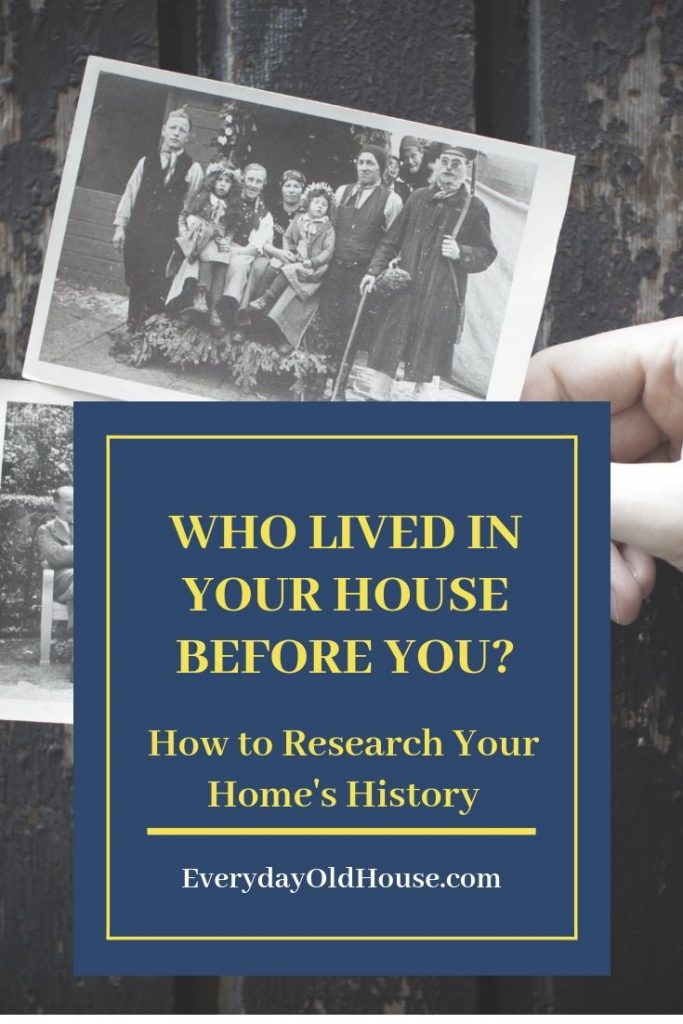
Paper Trail – Library and Historical Groups
Local resources, such as public libraries, historical commissions and historical societies, are key resources to tracing your home’s history. While the specific missions of these groups differ, they all share the initiative to collect and preserve local history.
Likely there will be an overlap of information between these groups, but still check with all three resources since one group may have substantially more information that the other.
Some municipalities have a strong history initiative, while others are, well, lacking. Hopefully you live in an area with a strong, robust sense of history and preservation.
In general, you should come across these types of resources at libraries and historical societies and commissions:
- Historical Surveys
- Historical Maps (aerials, fire insurance, panoramic)
- Photographs
- Plan Books
- Scrapbooks, Memorabilia and Donor files
- Postcards
- Phonebooks/ City or Street Directories
- Newspapers
- Local History Books
2. People Trail
While the paper trail gathered facts and figures about your house – construction date, previous owner names – the people trail humanizes these facts.
It provides the personalities of the past owners and occupants (i.e. the grouchy old man or the family with the mischievous children). This trail gives color to physical aspects of the house as well (i.e. the large lilac tree in the backyard was planted in memory of a mother).
The people trail will give you potentially fascinating and poignant stories that you will never find in public records.
People you should reach out to while tracing your home’s history might include:
- Historical Society Director
- Historical Commission Chair
- Local Librarian
- Neighbors
- Previous Owners
- Building Inspector
- Realtor
Learn more: 7 Essential People to Interview When Researching the History of Your Home

3. Visual Trail
In addition to the paper trail (i.e. deeds and local resources) and the people trail, the house itself can provide visual clues of its history. While some visual clues are subtle and left to the experts, an amateur with a sharp eye and time can detect signs to provide a general idea of a house’s history.
Where exactly do you look for clues to your house’s history?
- Neighborhood
- Home’s exterior
- Home’s interior
I admit that this part of my house’s research wasn’t as easy for me as the Paper or People Trail. This part can be very subjective and it’s easy for untrained eyes to miss something. However, the visual clues can be used to support the information you found from the paper and people trails.
Learn More: 3 Ways Your House Can Tell You Its History
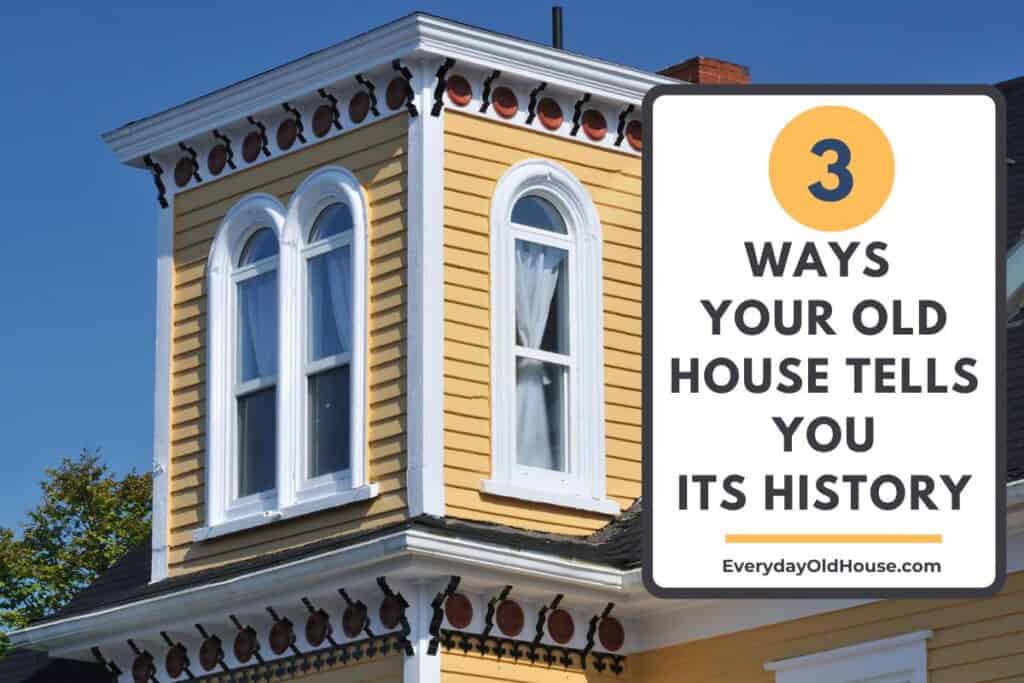
Phase 2. Analyze Clues
The clues have been collected. Now what? It’s time to take all the clues and piece them together to tease out the story of your home’s history.

There are a variety of ways to analyze and make sense of it all. But in my humble opinion, the best way is to organize everything in chronological order. A literal timeline of my house’s history.
Create a simple spreadsheet in Microsoft Excel or Google Spreadsheets with these 3 columns.
- Year (or approximate year) of document
- Source of document (i.e. a map, a neighbor), and
- Comments (if applicable).
Enter all the information found through your research, then sort by columns by year.
Next, it’s time to take that timeline and analyze. Add a 4th column for thoughts or assumptions connecting the timeline as you work in chronological order.
Admittedly, it’s not fancy, BUT this will bring together all the clues together and write a story.
Tips
Keep in mind while piecing together your clues:
- Expect to find gaps in years. And uncertainties. For my house, there were several farms in the late 1800s and it’s unclear to which farm we belonged.
- Don’t be surprised if you find conflicting information. Work with what you have. Just remember – you are capturing a story. And every good story has twists and turns. The more interesting, the better, right?
- If you get stuck, remember that you can reach out to the experts. You have done the legwork. An expert will review your documents and help you connect the dots of the story.
Phase 3. Preserve and Enjoy!
You collected clues, you made as much sense of them as you could to write your home’s story. Now what?
The last phase of tracing your home’s history is deciding how you want to showcase your treasure.
How do you want to present and preserve the information? Do you want a simple file? Or more of a showcase to share with friends and family? Here’s a few ideas.
Scrapbook
Scrapbooking (paper or digital) is an ideal option to show off your home’s history. It collates all the photos and documents that you’ve collected in one place that simultaneously organizes and still creatively tells your home’s story.
Organize the information in your scrapbook in any way that makes sense. Perhaps it’s a strict timeline following dates. Or maybe it’s organized by sections, such as:
- Neighborhood: How your neighborhood was developed, maps of the area
- House: Specifics about the physical history of the house – construction dates, building permits, etc.
- Families: Information discovered about the social aspect of the house – family photos, newspaper articles about previous owners’ marriages, births, deaths, enlistments in World Wars, etc.
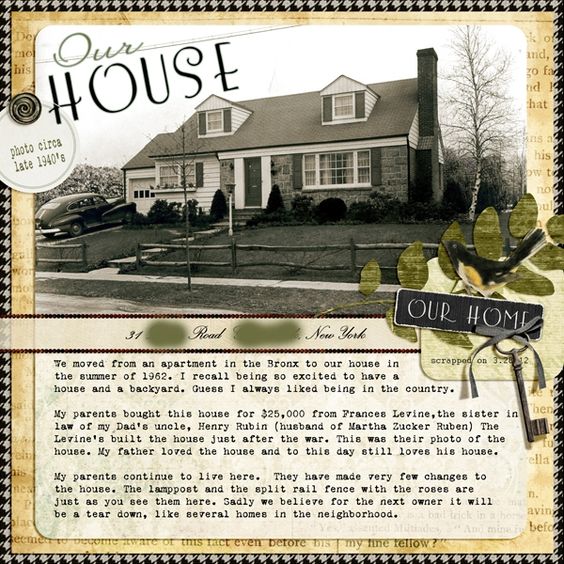
Digital scrapbook ideas from Scrapgirls.net
Don’t forget to add in physical pieces of the house. For example in our home, we have found pieces of original wallpaper, fragments of old kitchen tile (found in the backyard), a note from a child found underneath the stairs that tie together tangible pieces of the house with paperwork.
One tip though. Leave a little room throughout the scrapbook so that if you find additional information in the future, it can be easily updated.
Framed Artwork
Were you lucky enough to come across a gorgeous old photo or document that is dying to be hung up for all to view and cherish? Wouldn’t a old photo of your house or scan of the original deed be a beautiful way to celebrate your home’s history and be a conversation- starter with visitors?
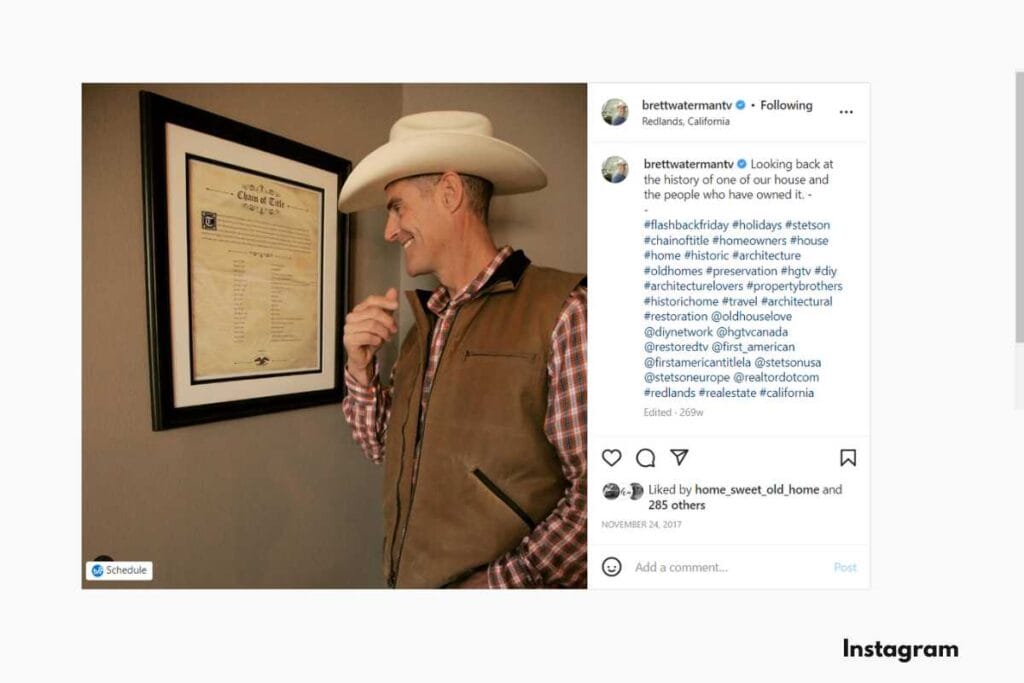
I love how Brett Waterman’s team on Magnolia’s Network’s Restored take the time to find deeds or original plot plans for the homes they rehabiliate. And then they go the extra mile to frame and hang them up to showcase the home’s history. (Ah-mazing show BTW, must-watch for old house enthusiasts)
Video
With today’s technology, why not create a video to preserve and show off your hard work? Videos can include discussion on your process (i.e. how you found all the information) and showing off the information and discussing it. Videos can even include anyone willing to be interviewed on camera.
Just remember, you are part of your home’s history. And when you have moved on from caring for this house, you too will be part of the fabric of this house’s story. Isn’t it intriguing to think that in 50-75 years from now that the next owners of your house might love to see and hear you describing how you went about tracing you home’s history?
File
If the above options don’t sound inspiring, an easy option is to simply organize all your paperwork and place in a folder that stays with your other house files, like your house journal. Or go paperless and scan into an electronic file.
My Home’s History
When we purchased our house in 2012, real estate records showed that it was built in 1916. So in 2016, on its 100th year birthday, we decided to throw it a party.
Admittedly, we aren’t the type of people who really need a reason to throw a party, but..
Organizing this party got me thinking about my home. Who used to live here? Who took their first steps here? Did anyone come here as a new bride like me? What did my house look like when first built?
So I fell down the rabbit hole of researching the history my home (and still am researching).
Truth be told, I didn’t expect much from my little old plain house. And I’ve been blown away by what I’ve learned about my neighborhood and my home.
It’s easiest to divide my home’s history into two parts: predevelopment as farmland, and then as a residence.
Farmland
My neighborhood was used a training ground for the town’s regiment back in the 1600s, and subsequently developed into farmland. My street is one of the oldest streets of my town, with a reference to it being a connecting road between the northwest part of the town and the Town Common as early as 1681.
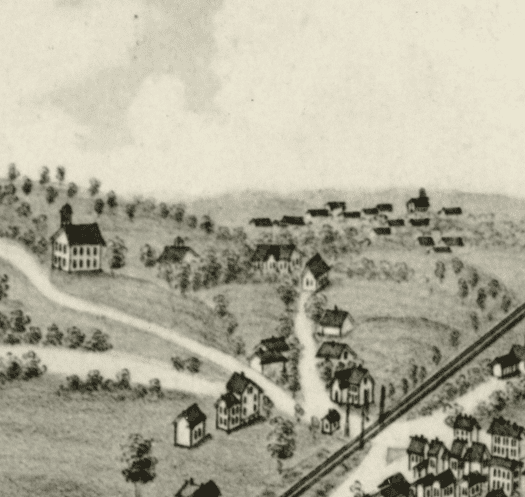
And apparently during the Civil War the street was renamed “Elm Street” (at late as 1874) due to an elm tree being planted along the road for each local soldier that died. Unfortunately, due to disease, many if not all those trees no longer exist.
My property appears to have been farmland up until the land was subdivided and my house was constructed. However, whose farmland is a bit sketchy based on conflicting information from historical maps and conversations with the historical society. Which makes for an interesting story, right?
So, my property could have been owned by these families:
Deacon Thomas Kendell
About 1/10th of a mile south, is the Deacon Thomas Kendall Homestead, whose main house (built pre-1750) is still standing! Deacon Kendall was one of the first settlers and was “very influential” in the town until his death in 1703.
In the 1800s, the Emerson family owned this house as well as 7 acres of “mowing and tillage” along my street, including a barn and 5 acres of pasture and meadow.
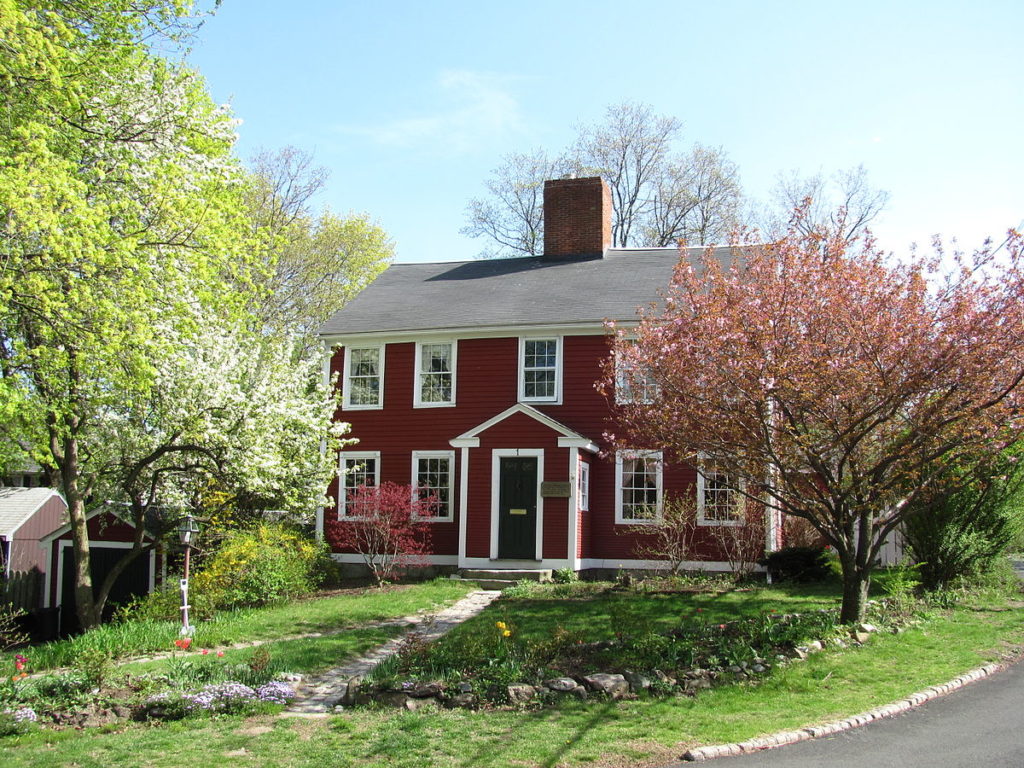
Dr. John Hay
In the opposite direction, again only 1/10 of a mile away, is the previous property of Dr. John Hay. His house, unfortunately, is no longer standing. Dr. Hay (1737-1815) was a doctor and fellow of Massachusetts Medical Society. He was known for preference in using natural remedies, and his work researching hemophilia.
Richard Walker and Suell Winn
Across the street from Dr. Hay’s property commonly known as the Suell Winn farm. However, before Winn owned the land in the 1800s, it was originally the homesteads of Capt. Richard Walker and Ebenezer Damon. Walker, born in 1610, was one of the 32 original settlers in Wakefield in 1647 (he was allotted 200 acres in 1638).
Major Suell Winn was known for his “industry, honesty and sterling character”. He owned an extensive farm with house (built in the early 1800s and still standing), three barns, carriage house and slaughter-house. His farm was divided by a railroad that went right through it. And unfortunately he was killed by a train after leaving a town meeting where he “spoke vehemently” for the need to erect safeguards at that same crossing.
Residence
Building department records indicate that my house was built in 1916. Because my house is over 100 years old, I was able to apply for the Historic Homeowner Signage Program through my town’s Historical Commission.
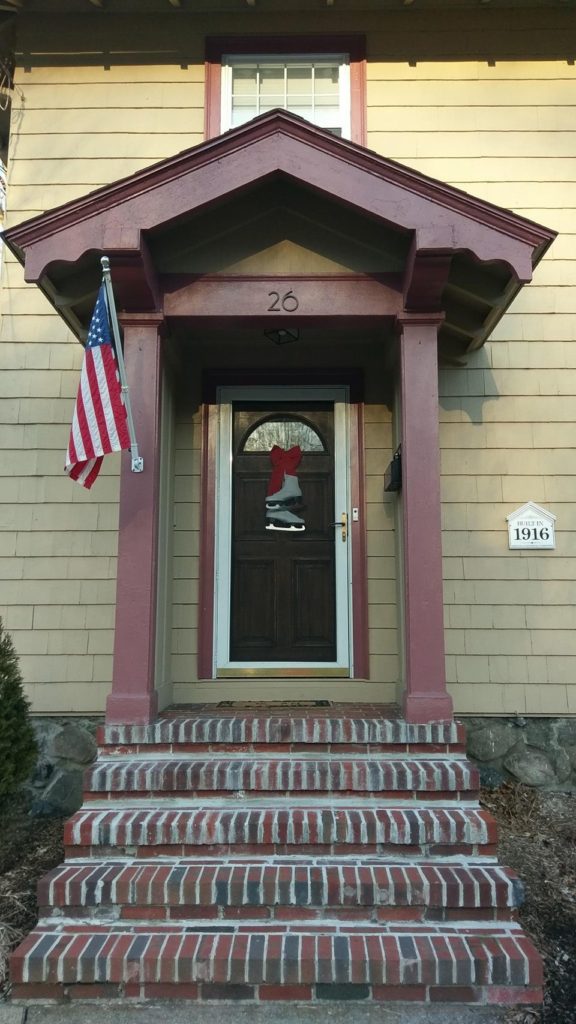
While there is a small fee to cover the cost of the plague, I love that I can show off pride in your community and my old house.
Using the Field Guide to American Houses, I learned that our house is an American Foursquare, an architectural type from the Craftsman period that has a fascinating tale of its own – a middle class house popular in both rural and urban areas, commonly built from plan books and kit homes.
Looking around the house, we confirmed that the attached sunroom was original to the house based on the basement footprint and consistent stone masonry in the foundation.
City directories and censuses have uncovered a variety of families who lived in our small home. This house held families as small as an retired married couple to a full family of 6. Sometimes occupants were the home’s owners, sometimes renters, including two single-moms with children in the 1960s and 1980s. Occupations included carpenters, merchants, “home-makers” and more.

We connected with a previous owner when we posted a picture of an old Snoopy notebook hiding under our attic stairwell to our local Facebook Group. The little girl who wrote on her notebook “if found please contact….” was one of 4 little girls in the family who lived here for around 25 years. And it was the same little girl that had scrawled “I love Michael Jackson 1984” in squiggly hot pink ink in the back of a bedroom closet.
In talking with our next-door neighbor we learned the secret to why there was no grass alongside the garage. And what the strange-looking makeshift wooden contraption was that attached to the garage. Turned out the family before us stored their boat and several kayaks in this spot.
I’m not done researching the history of my house – I’m excited what I’ll find out next…..

Disclaimer
I am not a professional home genealogist (nor play one on tv….). However, as a environmental consultant for 10+ years, I researched the history of 100+ commercial properties for property owners, potential buyers, and real estate developers. I utilized a variety of historical databases and resources – historical maps, government databases, interviews, and property visual clues – to create a picture of a property’s past.
My mission is to use these consulting skills (combined with genealogy classes) to help other homeowners to research the history of houses.
Note that my experience is limited to the United States. For European homes, I suggest this website.
Related Posts
Want to be the first to know about new posts? Be sure to follow me on Pinterest, Facebook, Instagram or Twitter of even Etsy! Or better yet… Subscribe below!
My monthly (admittedly sometimes more, sometimes less….) emails are like receiving a unexpected letter from an old friend WITHOUT needing to put on your slippers and walk out to your mailbox…. See? I got ya, my friend!)
[Note: My posts are proudly connected to these amazing link parties full of DIY ideas and inspiration!]
Photo credits by Amber Kipp, Nolan Issac, Zac Nielson, Dmitrij Paskevic, Joshua Hanks, Bethany Opler, all on Unsplash
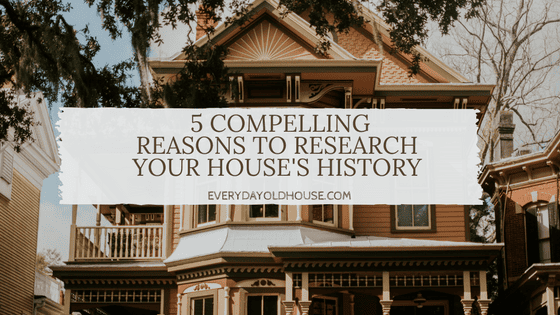

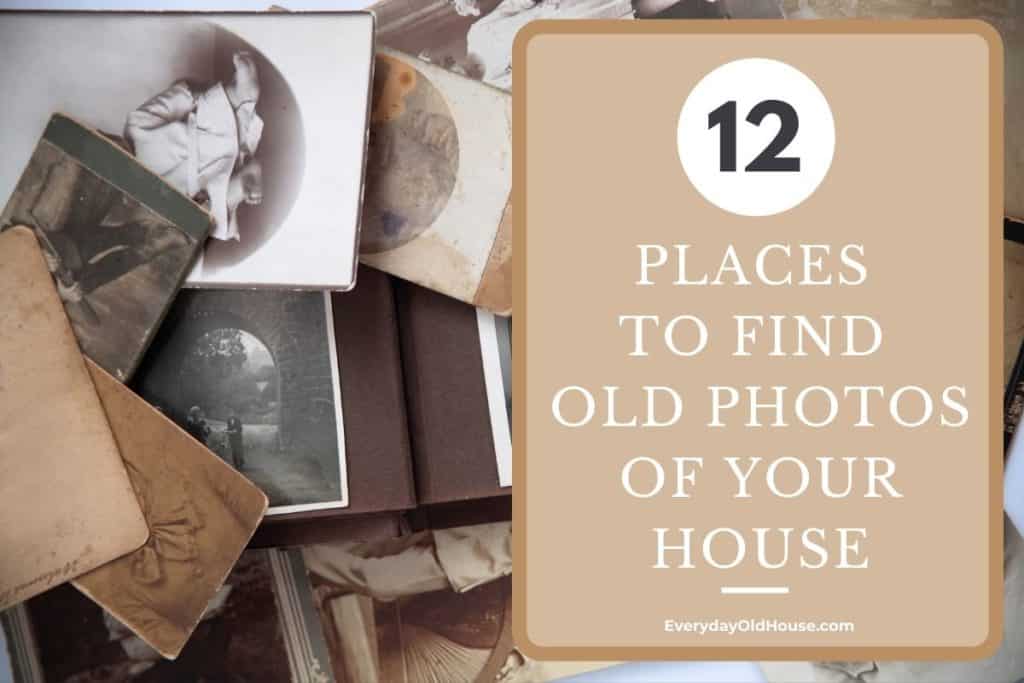

Wow, Wow, Wow, this is amazing. Congratulations you have so much information here. There was a program here in Australia that researched the history of homes and it was fascinating.
Helene – thank you for the compliment! So glad you enjoyed. It was a long process to get this post up and running, but it was truly a labor of love! Who knew my neighborhood and little old house would have such an interesting history? I bet Australian homes have a compelling history as well. Beautiful country – I was lucky to spend a few weeks there about 20 years ago and loved it. One of my favorite vacations. They had to drag me onto the plane returning back to the US kicking and screaming!